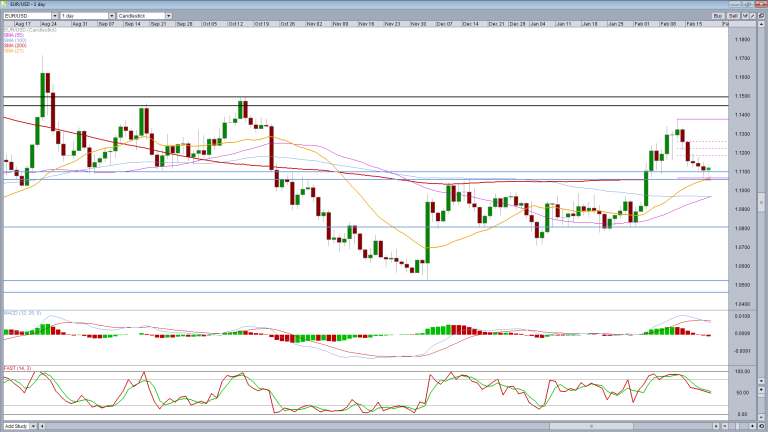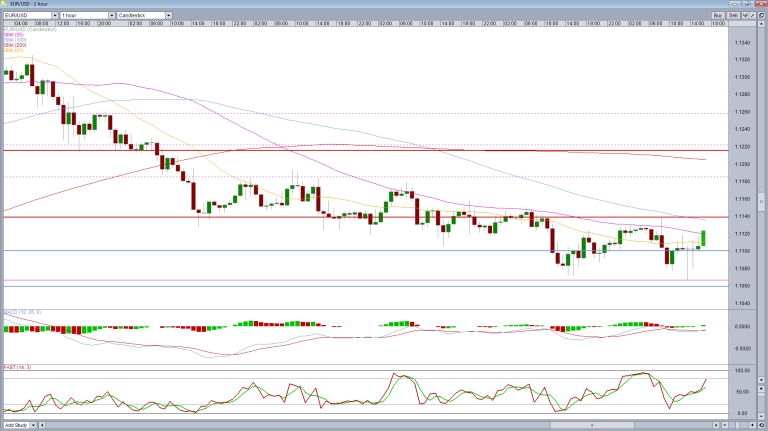The euro has performed very well since the turn of the year, benefiting greatly from a risk averse market that has sparked an unwinding of the carry trade that we often see in a “risk on” environment.
The single currency has performed very well against the US dollar, rallying as high as 1.1375 last week before falling back below 1.11 as risk appetite crept back into the markets.

The pair was always likely to find some support between 1.1050 and 1.11, with it having been a key zone on a number of occasions over the last year or so, and early signs suggest it has done just that. Moreover, the 21 and 200-day simple moving averages combine around 1.1060 to offer additional support.
The pair has traded within this region on Thursday and Friday this week and on each occasion has been met with strong buying pressure. The result is the formation of a kind of tweezer bottom on the daily chart, albeit with marginally different lows.
If we take a closer look at this on the 4-hour or 1-hour charts, we can see that this is a possible double bottom, with the neckline around 1.1140 and bottom at 1.1065.

Should we see a break through the neckline, it could prompt a move towards 1.1215, based on the size of the double bottom projected above the neckline. This is roughly a 50% retracement of the move from last week’s highs to this week’s lows and would be an interesting test for the pair.
A move above here could indicate that we’re going to see a move back towards the 1.1375 highs, or beyond, with 1.1450-1.15 being key above here.
As you can see below, OANDA clients are becoming increasingly bullish on this pair and there are a large number of pending orders between 1.1050 and 1.11 which just goes to show how key a zone it is.

Source: Craig Erlam – marketpulse.com












